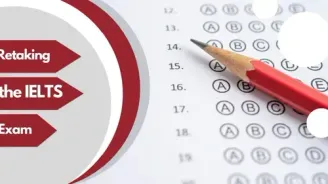IELTS Writing Diagram Task 1: How to Answer
In the IELTS Writing Task 1 diagram task, you are required to analyse and summarise a visual process, flowchart, or cycle.
While the entire writing section allows 60 minutes, spending around 20 minutes on this task is recommended, as Task 2 carries more weight. Your summary should be at least 150 words, focusing on describing each stage clearly and concisely.
In the IELTS Writing Task 1 diagram, you may encounter various types of visuals like flowcharts, cycles, and processes. These diagrams often depict stages in production (e.g., making coffee), natural cycles (e.g., water cycle), or technical processes (e.g., electricity generation).
Unlike maps or data charts, which focus on locations or numerical trends, diagrams require you to explain a sequence of actions, transformations, or movements in a logical flow.
Here are some strategies to answer this section.
IELTS Writing Diagram Task 1: Sample Answer
IELTS Diagram Task 1 can only be cracked with practice! Here is a sample answer. Take inspiration from it and write your own!

Sample Answer:
The diagram illustrates the recycling process of waste glass bottles.
It shows three main stages: waste glass bottle collection, plant recycling, and new product delivery.
The process starts by collecting the waste water bottles at a designated point and transporting them to a recycling centre or cleaning plant via trucks. The bottles undergo a thorough cleaning process at the plant using high-pressure water to remove dust and other contaminants. They are then sorted into three categories based on colour: brown, green, and clear.
Subsequently, the sorted bottles are taken to a glass factory and crushed into smaller pieces. These pieces are then heated in a furnace at temperatures ranging from 600°C to 800°C, turning them into molten glass. The recycled molten glass is combined with new liquid glass and poured into moulds to create new bottles.
Once the new bottles are formed, they are filled with beverages, marking the completion of the glass recycling process. The process concludes as the filled bottles are then sold to supermarkets.
IELTS Writing Task Diagram: Vocabulary
In IELTS Writing Task 1, precise vocabulary is essential for clearly describing stages and movements, especially for diagrams. A varied and accurate vocabulary impacts your Lexical Resource score, helping to convey complex processes effectively. Using the right words can significantly enhance clarity and boost your overall score.








